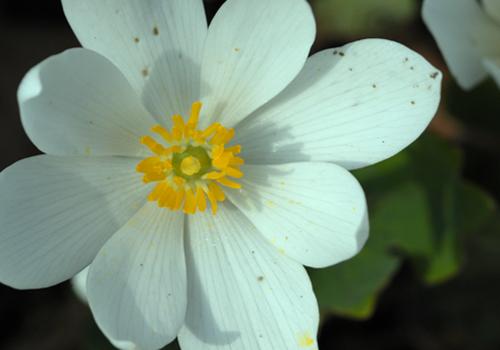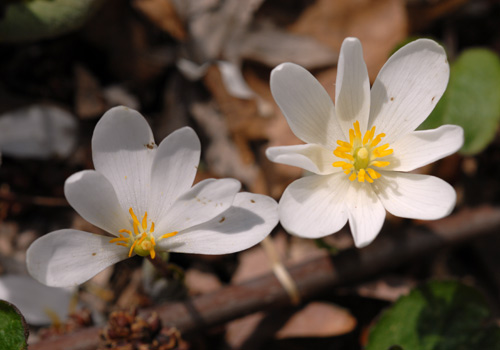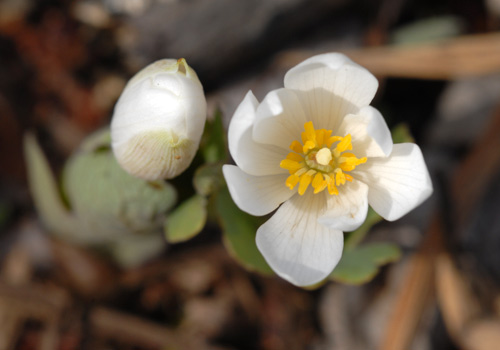One of my favorite ephemerals is the Bloodroot, Sanguinaria canadensis. If you are familiar with Latin and other romance languages, you’ll see why its genus is related to sangue (Italian), sangre (Spanish), sangue (Portuguese), sang (French), and sânge (Romanian). If you’re Canadian, well, you’re special: canadensis means from Canada.
The inflorescence lasts no more than a few weeks, often less, but it’s lovely when the come out, usually among the first to show up after the Snowdrops. Within a day or two of pollination, the petals fall and the seed pod starts swelling up in a slight but unmistakable fecundity.
Sanguinaria behaves like many flowers in that it opens and closes. I always thought it was a response to sunlight, but I wanted to find the mechanism. It’s pretty simple: a layer of cells on the inside of the petals expands its cells when heated to open the flower to the world. It makes sense to protect the pistil when nothing’s around to fertilize it, so the flower shuts down at night. Cool.
I never like to see petals fall as it marks the beginning of the end. Still, the leaves coming up have their own beauty. Their horseshoe shape is lovely, and the texture of the leaves is bumpy and veiny. I know that’s not a word (yet). But you understood me, right?
There are still a few flowers that are behind the curve, so I estimate we’ll have another three or four days until the petals scatter to the winds, and we’ll settle for lovely foliage until a good hard frost this fall. The seed pods will swell and burst, and the seeds will be scattered, where ants pick them up and carry them to their nests. This process, called myrmecochory, is another way Nature has of getting seeds to where they should be. The seeds are protected from birds, hidden deep in the ground where they can sprout.
Ants and Sanguinaria. Asarum canadense and carrion beetles. Botany is so cool.
Respectfully submitted,
Canoelover




